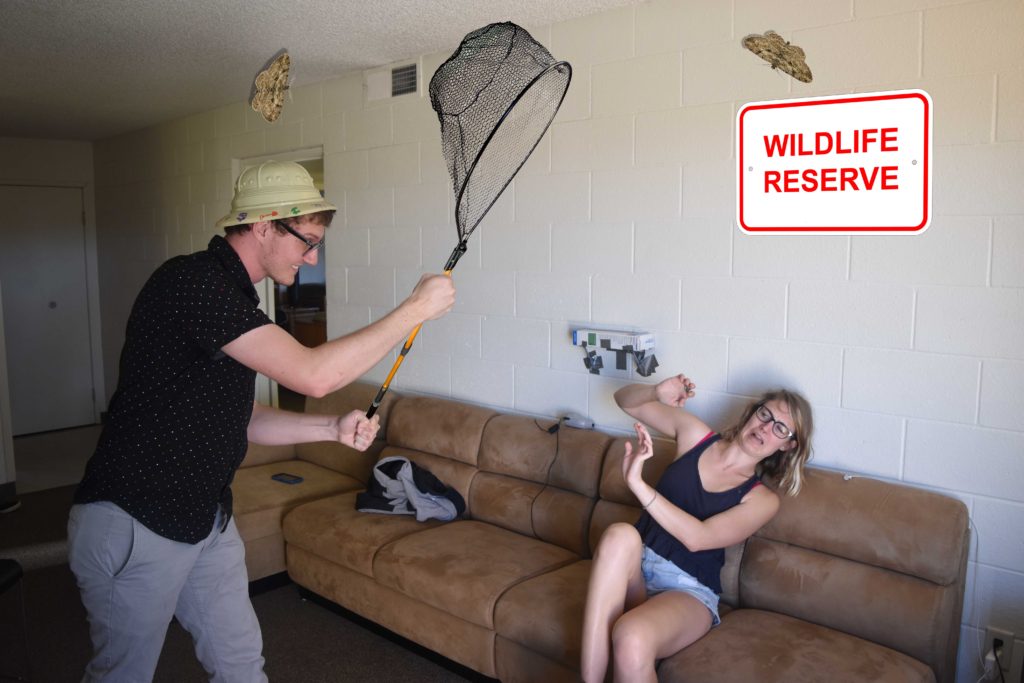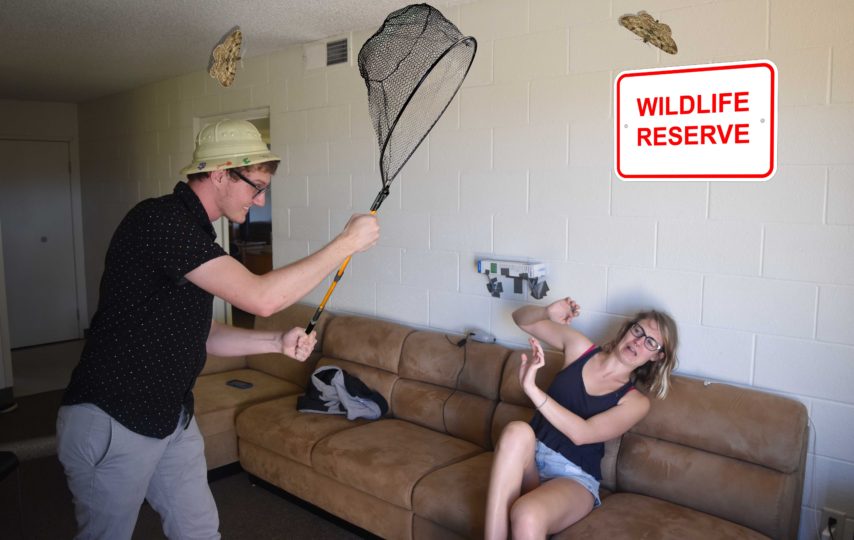
Photo by: Barak Tzori
In a sudden turn of events, the Muir residential halls have now been declared a wildlife preserve after a new species of moth was discovered being swatted around a suite lounge last Tuesday night.
Maria Smith, a freshman student at Muir and one of the co-finders of the previously-unknown species, vividly recalled her encounter with the “miraculous” specimen.
“It was giant and beautiful, with a flying speed 25 percent higher than average, almost impossible to catch. When it flew into my world, flapping those wings adorned with dazzling patterns, I suddenly felt something primordial welling up inside me, a feeling that I think could only be described as the essence of that iconic Edvard Munch painting.”
According to Smith, she was hosting a group study with a few friends in the lounge when the mouth landed on the back of her hand. After a brief period of Smith reportedly flailing her arm wildly, “in celebration of the moth’s majesty” according to Smith, the moth was captured in a plastic cup. One of Smith’s friends, Tera Le Pido, a biology major who happened to be taking a course on organism classification, jokingly took the moth back to her lab for practice, thus resulting in this groundbreaking discovery.
The new species of moth was named “arbor seminarario,” after the John Muir College and the circumstances it was discovered in. After further investigation, more details about the mysterious ecosystem behind this moth and numerous other intriguing creatures in the residential halls were gradually brought to light. According to experts, these breakthroughs “reveal an amazing coexistence of humans and arthropods” and “hold incredible value for ecological studies and pest control businesses.”
Not long after these discoveries, the Triple T ResHall Wildlife Preserve, consisting of three of Muir’s residential halls, including Tenaya, Tioga, Tuolumne, and the central Muir quad, was officially approved by the UC Natural Reserve System. It thus became the fifth wildlife preserve owned by UC San Diego. With its long-standing attentiveness to nature preservation, UCSD now becomes the very first university in the U.S. to maintain an insect preserve.
The response to the newly-established protected area has been decidedly positive. Smith, along with many other residents of the wildlife preserve, has campaigned for food donations to the preserve’s human inhabitants, in order to “reduce competition for the moths’ food supply.” Residents have also slightly less enthusiastically accepted new policies prohibiting swatting or repelling insects in the dorms, in case there are any other rare species that could be damaged before being catalogued.
However, a few experts also pointed out that creating a too-ideal environment might backfire, resulting in the species’ degeneration and the loss of many distinguishing features it gained through the long course of evolution and competition. With all these dissenting opinions, the final conservation strategy is still under debate. Smith and Le Pido, now considered the local authorities on entomology, were asked for their opinions, but it was reported that they were too busy “collecting data” on the new food donations.
Written by: Angelica Sun









